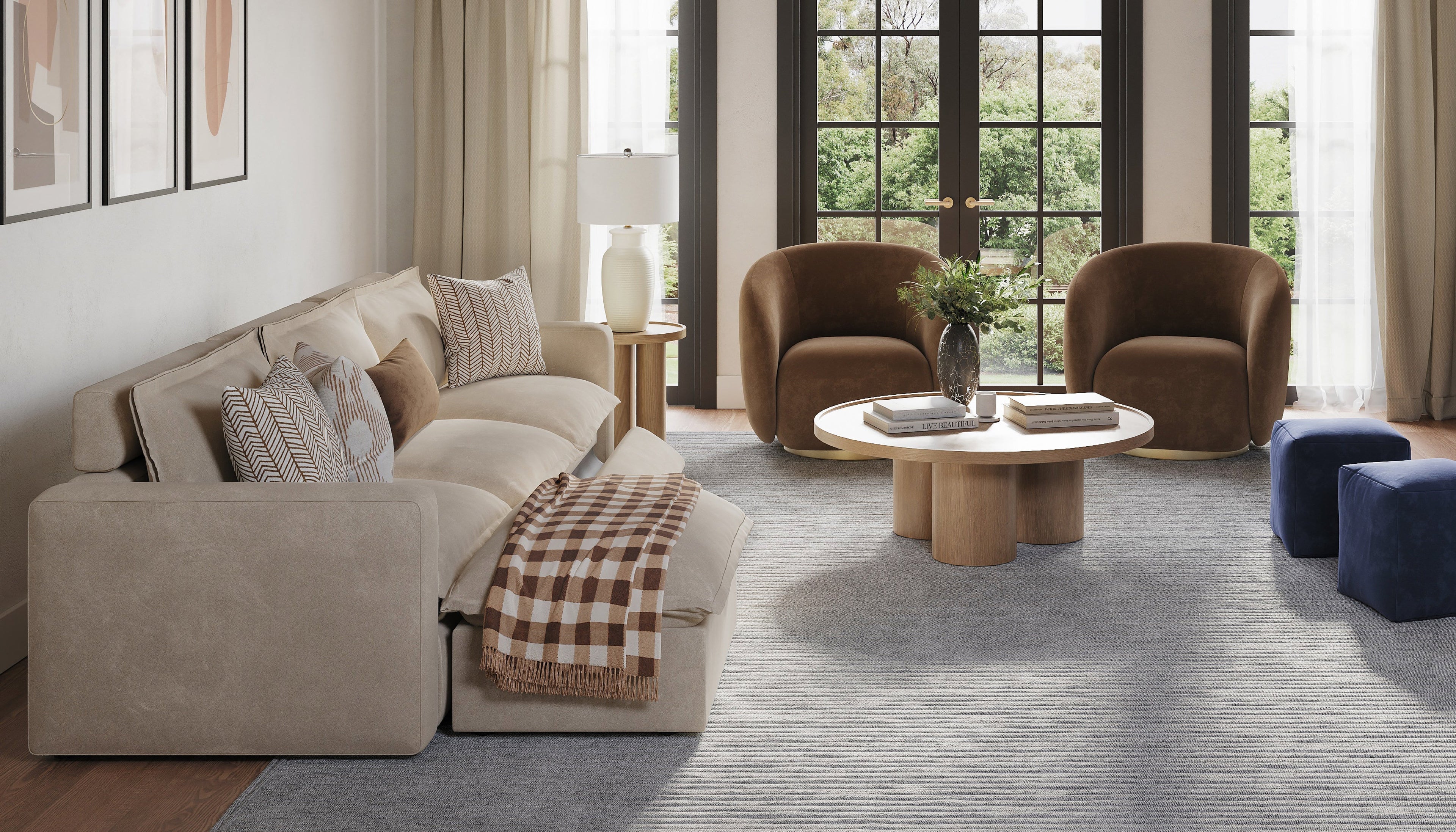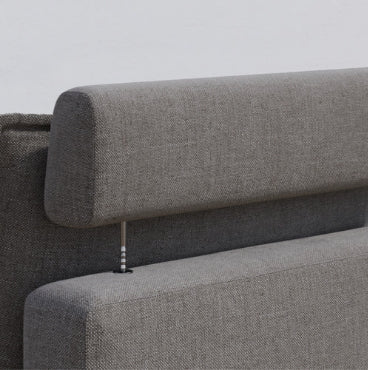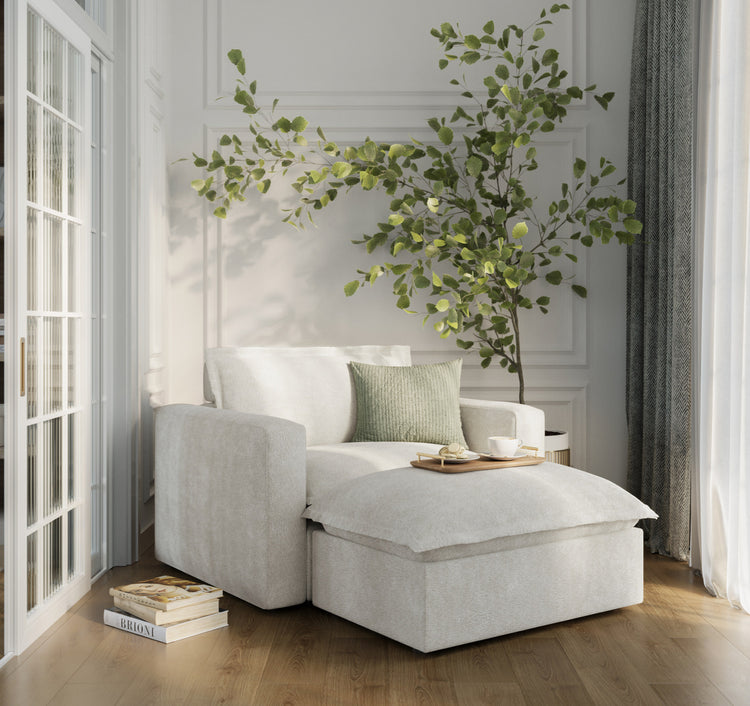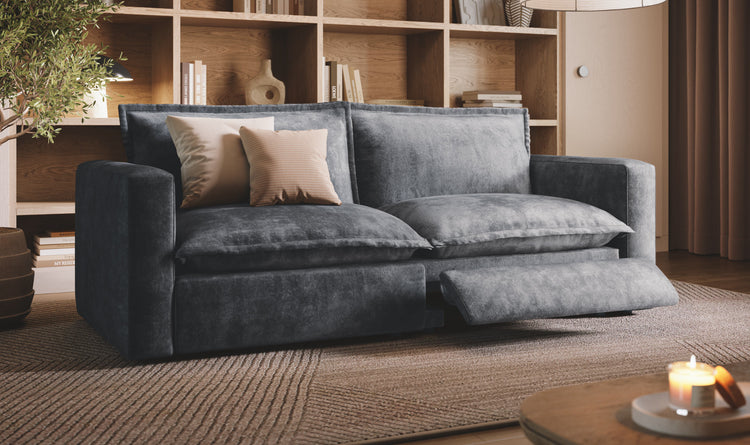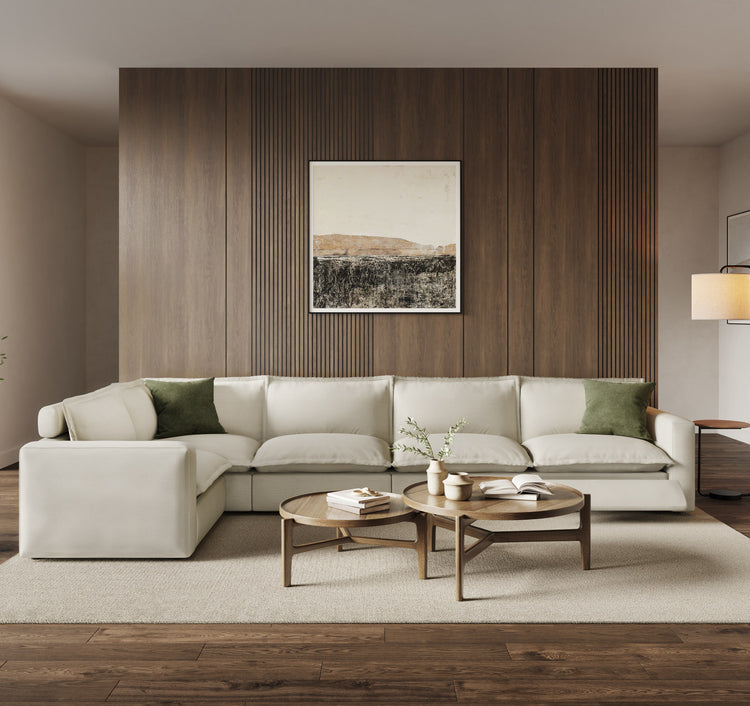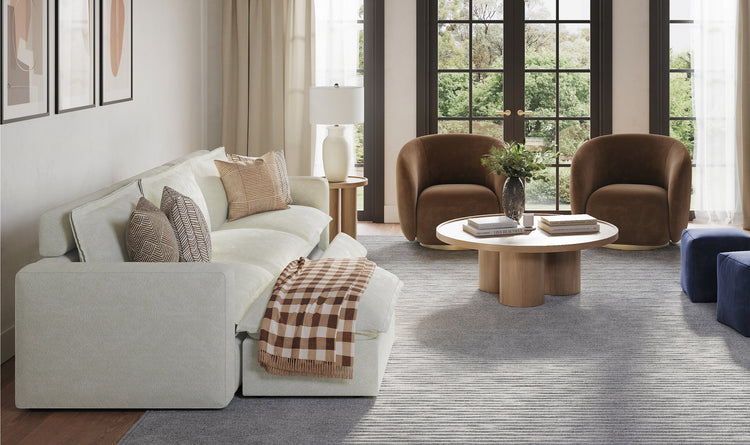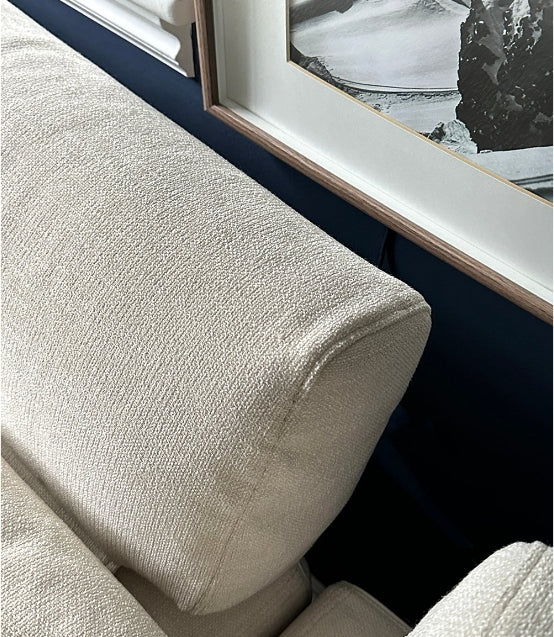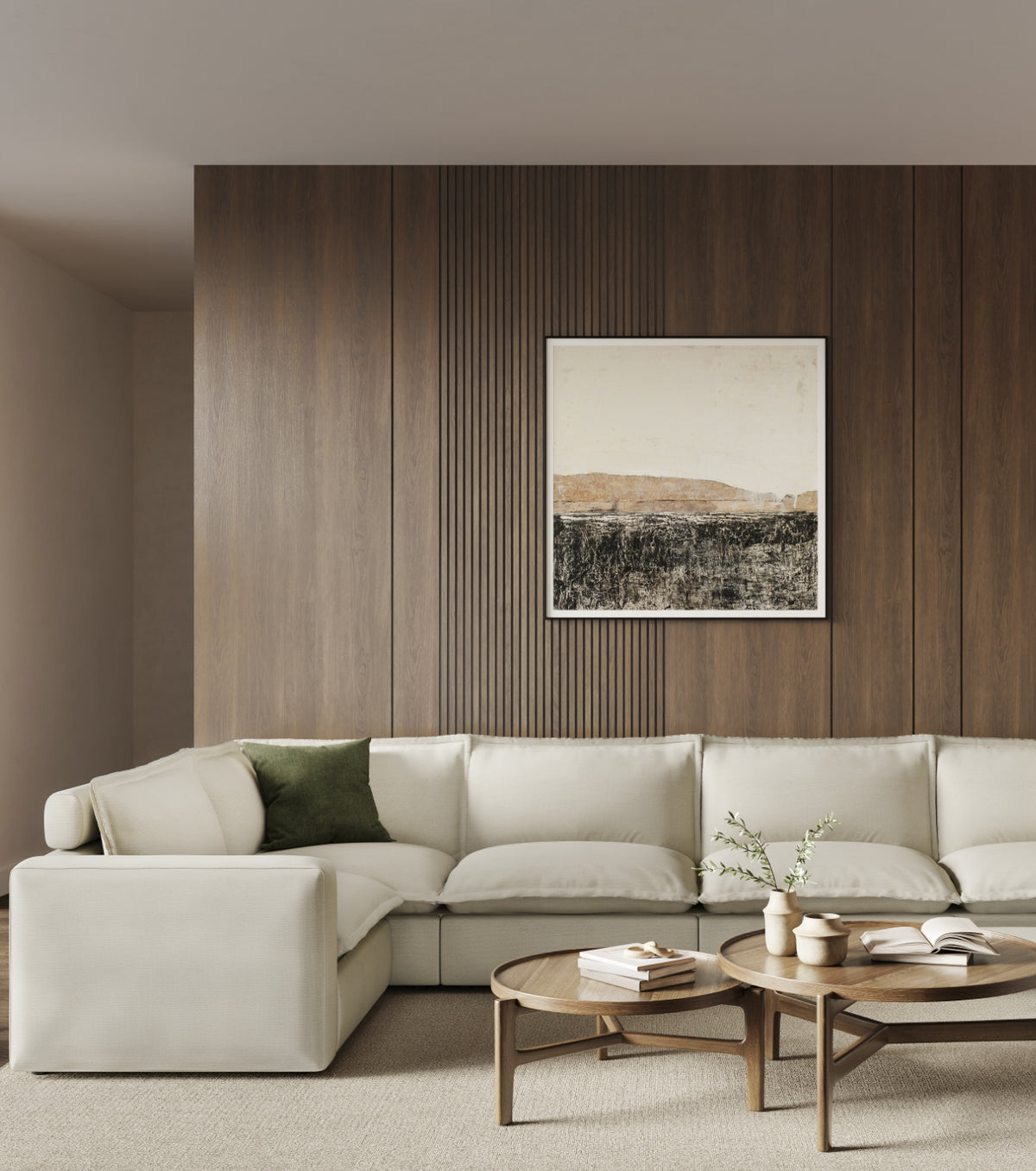A well-kept sofa is the heart of family life for many years, which makes how long it lasts matter to homeowners. Most good sofas last between 7 and 15 years, which is a big investment in both comfort and how your home looks. What decides if your sofa will last closer to 7 or 15 years includes the quality of materials, how it was built, how often you use it, and how you take care of it.
Where you place your sofa and the conditions around it also affect how well it holds up over time. Making smart choices when you buy a sofa and taking good care of it can make it last much longer, saving you money while keeping your family comfortable.
Materials Make Your Sofa Last Longer
The materials used in your sofa directly affect how long it will last in your home. Higher-quality materials cost more upfront but pay off by keeping your sofa going for several years longer. From the frame underneath to the cover material, each component plays a role in how your sofa withstands everyday use.

Strong Frames Last Longer
The frame is the skeleton of the sofa. Frames made from hardwood materials like oak, maple, or birch will last longer than frames made from softwood like pine or cedar by a few years. Kiln-drying the wood adds strength because drying the wood eliminates water that would eventually cause warping or cracking. Sofas that have frames put together using dowels, screws, and glue will hold together longer than sofas with just staples or nails. A solid frame can last 15+ years, while a weak one might break down in just 3-5 years.
Cushion Materials Matter
What's inside your cushions affects both comfort and how long they keep their shape. High-density foam (1.8 pounds per cubic foot or higher) resists sagging and maintains support for 8-10 years. Medium-density foam costs less but may flatten within 3-5 years. Down-filled cushions are very soft but need to be fluffed often to keep their shape. Memory foam conforms to your body but can lose its spring-back quality over time. The best cushions often employ more than one material—like a foam core wrapped in down—to achieve a balance between comfort and longevity.
Upholstery Types and Durability
The fabric on your sofa gets the most direct wear and tear. Leather is best known for its durability, lasting in good shape for 15-20 years with proper care and developing a sought-after patina over time. Microfiber provides textiles superior stain resistance and durability, lasting 7-10 years on average. Stain-resistant treated performance fabrics provide functional protection for families with children or pets and are extremely easy to clean. Velvet offers a rich look and is less cat-destructive than most assume—newer velvets resist claw snags, and shorter pet hairs do not cut too deeply into the pile. Employ stain-resistant synthetic velvets for the highest elegance and practicality. Canvas and cotton blends offer fair everyday wear for low costs, so they are a viable option for most families.
Construction Quality Affect Sofa Lifespan

A sofa's construction determines whether it is stable for decades or begins to wobble and creak after a few years. Great craftsmanship might not be visible from the outside, but these finer points are what distinguish a sofa that will endure for decades from one that needs to be replaced after a couple of years.
Strong Joints Keep Sofas Stable
The most critical weak points in any sofa are the joints between frame parts. Quality sofas use several reinforcement techniques at each joint. Double-doweled joints consist of wooden pegs inserted into corresponding holes in both pieces, forming a tight, durable seal. Corner blocks add support to frame corners. Glued and screwed joints are stronger than stapled construction. When shopping, pick up the end of the sofa—a sturdy frame won't creak or twist. These overbuilt joints avoid the wobbling that signals the death knell for a sofa.
Craftsmanship Details That Last
Good sofas have tiny but crucial details that help their longevity. Fabric-reinforced stress points at the arms and backs stop ripping where the fabric tightens. Double-stitched seams are more resistant to pressure splitting. Seams with properly aligned patterns demonstrate detail-oriented care that usually carries over to concealed structural components as well. Hand-tied springs, hand-trimmed fabrics, and bench construction (made by experienced people who craft them instead of assembly lines) usually equate to better quality across the board. These craftsmanship elements allow sofas to withstand daily use and abuse without gaining the squeaks, sags, and support problems that make older sofas unappealing.
Your Habits Affect Your Sofa's Lifespan
Your normal usage of your sofa decides how long it will last. Even a good-quality sofa deteriorates faster with routine usage than a sofa in a rarely used room. Understanding your household's habits helps you make better purchases and take better care of your furniture.
Daily Use vs. Occasional Use
A sofa in your living room gets a lot more use than one in a guest room. Sofas in family rooms get 4-6 hours of use per day, which compresses cushions and wears out frames after a while. Highly used sofas can wear out within 3-5 years, even with good care. A sofa in a formal living room, however, can be gorgeous for 15+ years. For heavy-use areas, locate commercial-grade material and high-density cushioning. Flipping cushions every week, the spreads wear more evenly.
Kids and Pets Create Special Challenges
Children and pets put sofas through extra wear and tear. Children jump, climb, and spill, while pets shed, scratch, and sometimes have accidents. For families with children, use washable, stain-resistant fabrics like microfiber or performance materials. Removable covers offer easy protection. With pets, tight-weave fabrics resist snagging by claws better than loose weaves. Leather is scratchable but long-lasting, and most synthetic fabrics resist pet hair. Dark colors or designs hide stains and pet hair better than light solids. Washable throws are worth considering when children and pets occupy your sofa.
Eating and Sleeping Habits Matter
It makes your sofa wear out faster and allows people to eat and sleep on it. Crumbs from food draw pests and leave stains that weaken fabric fibers. Using a sofa as a bed every night squishes cushions irregularly and puts stress on the frame. If you regularly eat on your sofa, use easy-to-clean fabrics with stain-resistant treatment, and don't opt for light-colored materials. For residences where the sofa serves as a guest bed, sofa beds with separate mattresses do less harm than sleeping directly on sofa cushions. Choose heavy-duty steel pull-out mechanisms over lightweight aluminum when used regularly.
Choosing the Right Sofa for Your Lifestyle
Choose your sofa based on your actual lifestyle, not on how you wish to live. For active families, sectionals with loose pieces allow you to swap out hurt sections instead of the entire sofa. Modular configurations transform as your lifestyle does. Pet owners and families with pets may benefit from pet-resistant, stain-resistant materials. If your sofa will receive a great deal of daily use, avoid fragile materials like silk, no matter how attractive it appears. Your lifestyle will be best served by a sofa that will endure longer and need less maintenance.
Proper Care Extend Your Sofa's Life
Taking care of your sofa helps it stay comfortable and look good for years. Simple maintenance habits make a big difference in how long your furniture lasts and how well it holds up over time.
Weekly Cleaning Prevents Damage
Spend just 5-10 minutes each week vacuuming your sofa with the upholstery attachment. Focus on seams, crevices, and under cushions where crumbs hide. For leather sofas, wipe with a soft, dry cloth. This quick habit stops dirt from grinding into fabrics when you sit down and prevents the gradual dulling that makes sofas look old too soon.
Act Fast on Spills
When accidents happen, blot spills immediately with a clean white cloth—don't rub. For fabric sofas, use a little mild soap and water on water-based spills. Oil-based stains might need a dry-cleaning solvent. For leather, wipe spills quickly with a dry cloth, then use a leather cleaner if needed. Always test cleaning products on a hidden spot first. Quick action prevents stains from becoming permanent.

Keep Cushions in Shape
Flip and rotate removable cushions weekly to help them wear evenly. For attached cushions, fluff them regularly to redistribute the filling. Give back cushions occasional "karate chops" to restore their shape. This prevents one-sided sagging and keeps your sofa comfortable longer. Down-filled cushions especially benefit from daily fluffing.
Use Protective Covers
Throws, blankets, and arm covers add style while protecting your sofa. These washable items catch oils from hands and heads that break down fabric over time. Arm covers shield against wear in high-touch areas. In homes with kids or pets, washable throws over cushions catch hair and spills before they reach your sofa. This protection is particularly valuable for light-colored or delicate fabrics.
Schedule Professional Cleaning
Even with good home care, sofas need occasional deep cleaning. Have your sofa professionally cleaned every 12-18 months to remove deeply embedded dirt and refresh the fabric. For leather, professional conditioning prevents drying and cracking. Many warranties require professional cleaning to stay valid. Choose cleaners experienced with your specific upholstery type. Professional cleaning not only improves appearance but also removes allergens and extends your sofa's life.
Extend Your Sofa's Life With These Simple Care Tips
Taking care of your sofa doesn't have to be complicated. This guide gives you practical ways to keep your furniture looking good and feeling comfortable for years longer than you might expect. Start with regular vacuuming and spot cleaning, keep your sofa away from direct sunlight, and address small problems before they become big ones. When cushions start to sag, consider affordable upgrades rather than full replacement.
Know when repairs make sense and when it's truly time for something new. By giving your sofa a little attention now, you'll save hundreds or even thousands on premature replacement costs. Your sofa is one of your home's hardest working pieces—give it the care it deserves, and it will continue to be the comfortable centerpiece of your living space for many years to come.
Sofa Care FAQs: Get More Years From Your Furniture
Q1: How long should a sofa last?
A quality sofa should last 7-15 years with proper care. Budget sofas ($500-1,000) typically last 3-5 years, mid-range sofas ($1,000-2,000) about 7-10 years, and high-end sofas ($2,000+) can last 15+ years. The actual lifespan depends on construction quality, usage intensity, and maintenance practices.
Q2: How do I protect my sofa from pets?
Use washable throws or pet-specific furniture covers on areas where pets sit. Trim your pet's nails regularly to prevent snags and tears. Consider applying a pet-friendly fabric protector spray. For leather sofas, wipe paw prints immediately with a slightly damp cloth. Keep a designated pet bed nearby to encourage alternatives to sofa lounging.
Q3: Can professional cleaning extend my sofa's life?
Yes, professional cleaning every 12-18 months can significantly extend your sofa's life by removing embedded dirt that accelerates fabric breakdown. Professional services extract allergens and contaminants from deep within cushions that regular vacuuming can't reach. The cost ($100-250) is minimal compared to premature replacement costs.
Q4: What are the best materials for a durable sofa?
For frames, kiln-dried hardwood like oak, maple or ash offers the best durability. For upholstery, full-grain leather lasts longest (15+ years), while performance fabrics like Crypton, Sunbrella, or those with 100,000+ double rub counts offer excellent fabric durability. For cushions, high-density foam (1.8+ pounds) with down or fiber wrapping provides the best combination of comfort and longevity.
